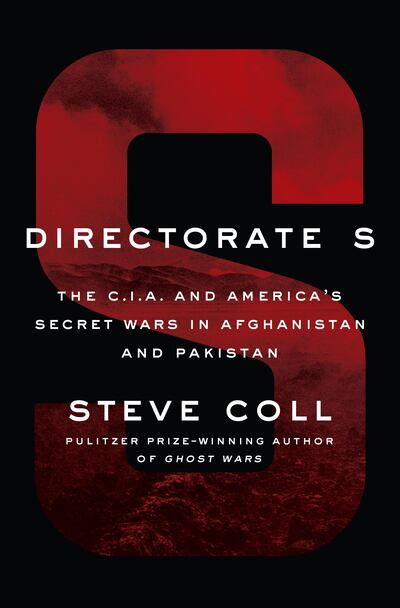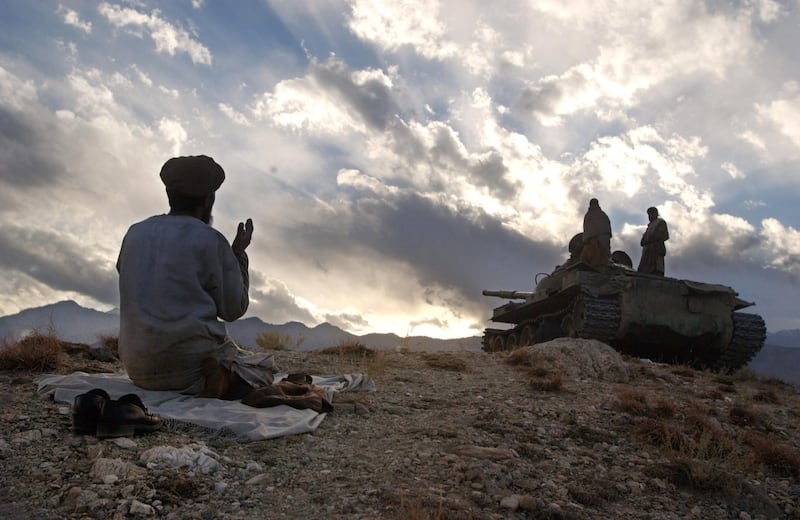Steve Coll's latest work, Directorate S: The CIA and America's Secret Wars in Afghanistan and Pakistan, can be seen as a follow-up to his bestselling and critically acclaimed 2004 book Ghost Wars: The Secret History of the CIA, Afghanistan, and Bin Laden, from the Soviet Invasion to September 10, 2001.
That earlier publication was a mammoth masterpiece of granular recording about the deep machinations of the United States’ Central Intelligence Agency behind the scenes and below the headlines in Afghanistan in the decades immediately prior to the 9/11 attacks on American soil.
A thread running through Ghost Wars was the saga of the CIA's prickly combination of co-operation and competition with Pakistan's Inter-Service Intelligence, the ISI, a relationship infinitely complicated by the US' dealings with the government and various intelligence agencies of India.
Now, 14 years later, Coll continues the story, and since he is in large part telling the story of the CIA, he's necessarily starting this new volume with that agency's worst black eye and most public failure, despite an entire summer in 2001 in which "it had been obvious from intelligence reporting that something big and bad was coming." At the time of the 9/11 attacks, the Counterterrorism Centre (CTC) director Cofer Black, a CIA veteran of the Africa Division, tried to reassure his staff. "If you remember one thing from this," he tells them, "I'd like it to be that we're the good guys, and we're going to win."
Directorate S, named after a covert wing of the ISI, delivers many different messages, expounds through vast research and reporting on many different themes, but it's hard to imagine even a single reader finishing the book's final page and believing Black's pep talk. The CIA and the CTC are many things in the course of this book's 750 densely written pages, but plain-and-simple "good guys" – the term has no meaning. Ultimately, this is far too nuanced a book for "good guys" or one-dimensional "bad guys" – even Black himself, described by Coll as "theatrical and self-dramatizing," isn't always purely one or the other.

Coll remains a master of carving characters out of heaps of raw data; his pages are crammed with speaking parts, and yet he takes a moment in every case to delineate a quirk or paint a quick portrait. Of Black he writes: “He was the sort of CIA officer one would expect to encounter in an Oliver Stone film.”
Richard Blee, an experienced CIA operative who turns up often in the narrative, is "cerebral and well-informed about international affairs, comfortable working in ambiguous conflict zones". Renowned Afghan guerrilla commander (and ardent bibliophile) Ahmad Shah Massoud, mercurial fitness nut General David Petraeus, glowering neocon mastermind vice president Dick Cheney, crafty Afghanistan president Hamid Karzai, and dozens of others are brought to life in refreshingly multi-layered detail. This is a deeply researched, often groundbreaking contemporary history that reads like the most intelligent of political thrillers.
The story winds its way from the attacks of 9/11 to the escape of Osama bin Laden at the Battle of Tora Bora to the international hunt for Al Qaeda members, always returning to Coll’s main plot, the morphing nature of the ISI itself and its shifting relationship with the Taliban.
The book’s most troubling and potentially controversial later sections trace those shifting relationships into Barack Obama’s White House. The machinations of several Obama key players in the region – centrally and damningly, including the US president himself – come across as the worst possible combination of arrogance and short-sightedness.
The Obama administration’s negotiations with the Taliban – sometimes involving ISI when they shouldn’t and often not involving ISI when they should have – are laid out in unprecedented detail, and although it’s possible to feel Coll doing his best to write approvingly of Obama himself, the sense of avoidable disaster in these chapters is inescapable. No previous writer has come close to this level of comprehensive analysis, however painful or infuriating; all future histories of the US’s long war in Afghanistan will have to start with this book.
As in Ghost Wars, Directorate S has as one of its most maddening main characters the CIA itself, an agency Coll here describes as "part university campus, part mad science lab, part undercover police force, part paranoid internal affairs department, and part militia".
In scheme after scheme, the agency’s left hand often has no idea what its right hand is doing; its budgets and strategies are murky even at the best of times, and Coll can be brutally frank about its leadership. “Mid-level CIA managers could be lazy or cantankerous or stupid or all three. Federal employment rules made it difficult to do anything about poor performers, short of proof of theft or felony violence,” Coll writes, unconvincingly adding, “… They knew their mission mattered.”
________________
Read more:
'Frankenstein in Baghdad': A monster made from the souls of a ruined city
Book review: Turning for Home by Barney Norris filled with tender and plangent observation
Book review: Writing as catharsis, how Amy Tan untangled the knots of her past
________________
The precise nature of that mission is nearly impossible to discern amid the welter of institutional chaos Coll describes with such halting precision; and the inner workings of ISI (and the larger Pakistani intelligence world), revealed by the journalist at fascinating length, are hardly more encouraging.
Coll seems wary of placing excessive blame on ISI for concealing the whereabouts of bin Laden during his years of hiding in Pakistan (the subject of 2017's excellent The Exile by Cathy Scott-Clark and Adrian Levy), but his reporting casts invaluable new light on the role Directorate S played in shoring up the Taliban and using them as a geopolitical chess piece in a broader game that often placed ISI in opposition to American interests.
Directorate S naturally leaves its story unfinished. Coll wraps up his book with brief mentions of where his key players were all heading when he concluded his reporting, but the larger quagmire is in a seemingly perpetual state of lethal flux, with insurgencies and alliances shimmering into and out of existence like mirages. Readers will wonder what a Steve Coll book on the CIA in Afghanistan in 2032 will have to divulge – and whether or not anyone will still care enough to read it.










